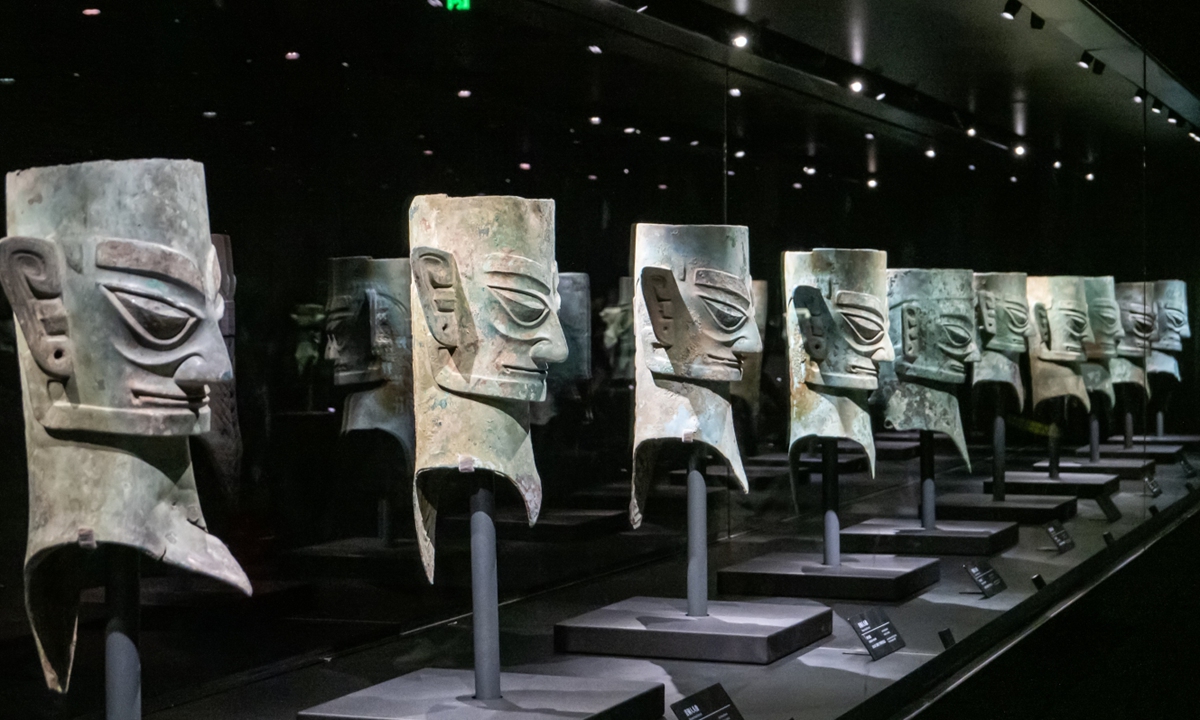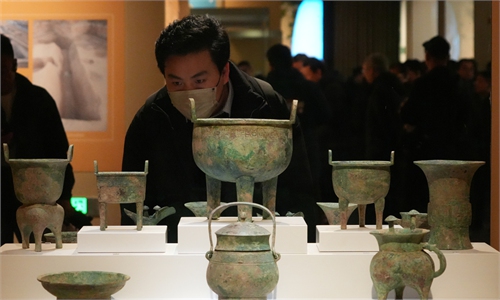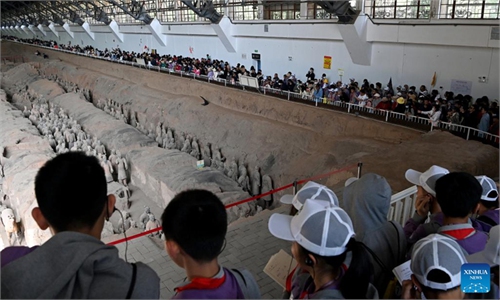ARTS / CULTURE & LEISURE
Should commercial activities be banned at museums for sake of exhibitions?

Bronze head sculptures on display at the new Sanxingdui Museum building in Guanghan, Southwest China's Sichuan Province Photo: VCG
The Sanxingdui Museum in Sichuan Province, one of China's most sought-after exhibition facilities, recently released a visiting notice that prohibits many activities such as unauthorized "online streaming" and "museum study groups."
The site's new regulation, especially its prohibition of a diverse range of activities, begs the question about how harmful these "unauthorized" activities really are, and why Chinese museums have started to ban them?
Prior to the Sichuan museum's notice, similar bans have been consecutively issued by museums in the provinces of Shaanxi, Henan and Guangdong over the past two years.
Take "online streaming" as an example. It has been rejected by many museums for the potential harm it poses to displayed artifacts.
A typical case of this occurred in March, when popular Chinese livestreamer Dong Yuhui received public condemnation for using bright lights while streaming around light-sensitive artifacts in the Hubei Provincial Museum.
Dong might be able to win netizens back with earnest apologies, but the museum, a facility for displaying and preserving culture, cannot afford damage to its artifacts.
This is one of the major reasons that museums have set strict standards for on-site commercial activities.
"Visitor number is not a museum's only goal. It juggles a lot different factors such as collection, preservation, research and public education," Zhang Liming, a museum expert, told the Global Times.
In recent years, visiting museums has become a trending choice for cultural leisure in China. Not only has this benefited local cultural tourism, it has been greatly beneficial for public education, especially among young generations.
Looking at the Hubei Provincial Museum as an example, the number of student visitors has surged nearly 40 percent every year since 2021.
The big "student market" is like the two sides of a coin, with one side motivating museums to improve services, while the other side being a lucrative cake being sliced up by independent educational companies, some of which, however, lack well-trained guides.
"Museum study groups" are now a serious business for prolific independent educational companies. However, several incidents have occurred in which students were given misleading knowledge or incorrect explanations on Chinese history by amateur guides. If banning "online streaming" is to protect relics physically, then banning these "museum study groups" is a means to ensure that Chinese culture is passed down to the future correctly.
"Banning such activities is necessary. Nothing can be worse than misleading young people, because our history and culture is going to pass through their hands," Zhang told the Global Times.
To some extent, a facility like the Sanxingdui Museum prohibiting such on-site activities is good not only for visitors, but also for its own development.
Through selecting good programs and monitoring how the public engages with the museum, a facility is more likely to form a better exhibition environment that can meet the true needs of the public.
However, is online streaming a bad strategy that should be banned forever?
And is it possible for museums to learn from streamers like Dong to promote themselves, but in a much more professional way?
Answers to these questions can look positive if museums strategically reflect on these prohibited activities and take some good advice from them.
"If the study group business is popular, a museum can consider launching their own services but with professional guides," said Xu Shuming, a cultural sociologist.
The author is a reporter with the Global Times. life@globaltimes.com.cn


